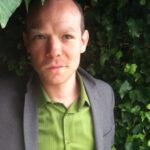Redefining Emotional Categories
A New Study Challenges a Historical View of Scarcity in the Slim 6 Categories of Emotion in Psychology
A very interesting new study is challenging a historical view in psychology that there are merely six categories of emotion: happiness, sadness, anger, fear, disgust, and surprise.
Researchers from the University of California at Berkeley have concluded that there are 27 distinct categories of emotion that are generally shared between individuals.1 They have created a multidimensional and interactive map detailing these emotional states and how they are related.2 The very interesting thing that this map shows is that the emotional states that we as human beings experience are not isolated islands of feeling, segmented from other feelings, but exist in a sea of connectivity with other emotions – which may or may not seem intuitively similar. It shows a very nuanced and complex view of human emotional expression.
853 Participants Were Broken into 3 Groups in the Study
The study took 853 participants and broke them up into 3 groups. Each group was shown a large number of short film clips intended to elicit emotion. Some examples of clips were traffic accidents, people doing crazy stunts (both failing at them and severely hurting themselves, and also succeeding), natural disasters, death, suffering, and sexual acts. Each group watched roughly 30 clips. The first group was asked to openly describe their responses. These responses confirmed a rich array of emotions. The second group ranked the videos in terms of how strongly they felt more than 30 different responses to each video. At this point in the study, the researchers noted that participants often had similar responses to the videos. More than half the time, actually responding the same way. The third group rated their responses to 12 clips based on different dichotomous scales such as good and bad, positive and negative, dominance versus submissiveness. The researchers were able to predict how the third group would rate the videos based on the emotional data given by the other two groups.
Human Emotional State is More Complex than Happy and Sad and More of a Pantone Than Stark Black and White
This is obvious support that the human emotional state is a lot more complex that happy and sad. It also gives key insight into the structure by which those with higher emotional intelligence may be inclined to communicate their emotional experience with a more colorful pattern than someone with a less complex emotional intelligence. Clinically, these distinct emotional states could be beneficial to understanding the subtle differences between our own interpretation of a patient story/history, and what they are actually saying.
The list of the 27 distinct emotions from the study below:
Admiration
Adoration
Aesthetic Appreciation
Amusement
Anxiety
Awe
Awkwardness
Boredom
Calmness
Confusion
Craving
Disgust
Empathetic pain
Entrancement
Envy
Excitement
Fear
Horror
Interest
Joy
Nostalgia
Romance
Sadness
Satisfaction
Sexual desire
Sympathy
Triumph
Sources
- Cowen AS, Keltner D. Self-report captures 27 distinct categories of emotion bridged by continuous gradients. Proc Natl Acad Sci USA. 2017
- Data map
Image Copyright: <a href=’https://www.123rf.com/profile_lightwise’>lightwise / 123RF Stock Photo</a>
 Node Smith, ND, is a naturopathic physician in Portland, OR and associate editor for NDNR. He has been instrumental in maintaining a firm connection to the philosophy and heritage of naturopathic medicine among the next generation of docs. He helped found the first multi-generational experiential retreat, which brings elders, alumni, and students together for a weekend camp-out where naturopathic medicine and medical philosophy are experienced in nature. Four years ago he helped found the non-profit, Association for Naturopathic ReVitalization (ANR), for which he serves as the board chairman. ANR has a mission to inspire health practitioners to embody the naturopathic principles through experiential education. Node also has a firm belief that the next era of naturopathic medicine will see a resurgence of in-patient facilities which use fasting, earthing, hydrotherapy and homeopathy to bring people back from chronic diseases of modern living; he is involved in numerous conversations and projects to bring about this vision.
Node Smith, ND, is a naturopathic physician in Portland, OR and associate editor for NDNR. He has been instrumental in maintaining a firm connection to the philosophy and heritage of naturopathic medicine among the next generation of docs. He helped found the first multi-generational experiential retreat, which brings elders, alumni, and students together for a weekend camp-out where naturopathic medicine and medical philosophy are experienced in nature. Four years ago he helped found the non-profit, Association for Naturopathic ReVitalization (ANR), for which he serves as the board chairman. ANR has a mission to inspire health practitioners to embody the naturopathic principles through experiential education. Node also has a firm belief that the next era of naturopathic medicine will see a resurgence of in-patient facilities which use fasting, earthing, hydrotherapy and homeopathy to bring people back from chronic diseases of modern living; he is involved in numerous conversations and projects to bring about this vision.









